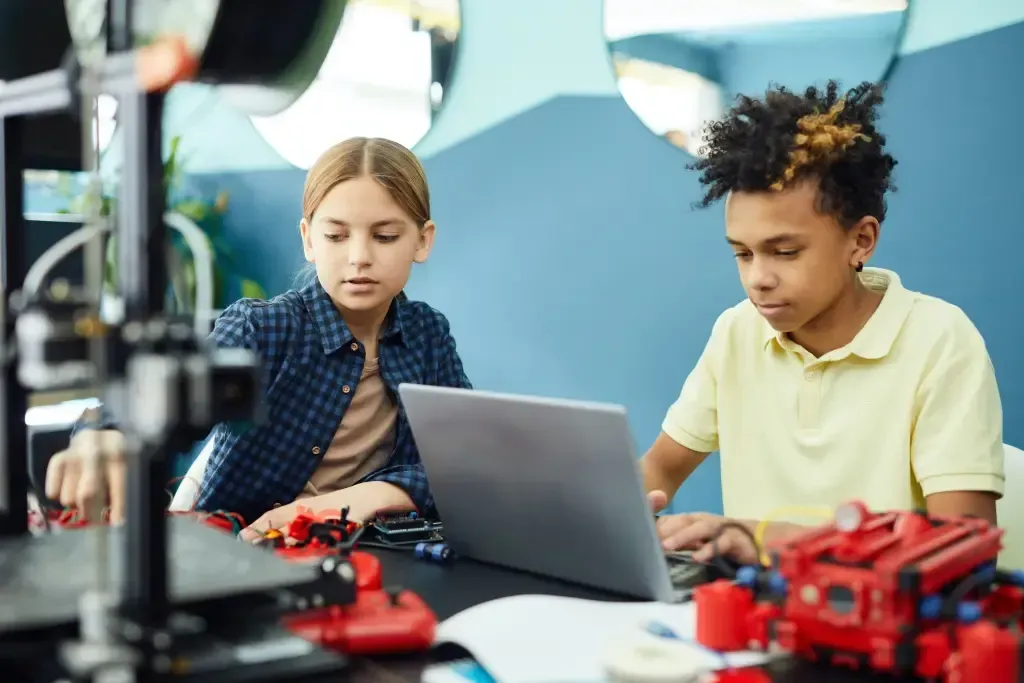
Body Doubling: The ADHD Parenting Hack That Helps Kids Get Stuff Done
I told my son to finish his homework, then stepped away to work on my own project. When I came back a few minutes later, he wasn’t working—he was deep in construction mode, building an elaborate pencil fort instead.
What just happened?!
If your child has ADHD (or struggles with focus), you know that tackling boring or overwhelming tasks can feel like an uphill battle. But what if there was a simple way to help them stay on track without nagging, frustration, or power struggles?
Enter body doubling—a game-changing ADHD strategy that makes tasks feel easier for kids (and their parents).
Instead of giving more reminders, I simply sat next to my son and told him I’d stay while he worked. And just like that—he finished his homework. No arguments, no distractions, no struggle. Just my quiet presence was enough to keep him focused.
What Is Body Doubling?
Body doubling is when your child works on a task while someone else (that’s you!) is nearby, doing their own thing. You don’t have to coach, nag, or hover—you’re just there.
Think of it like a built-in accountability partner, but without the pressure. Just your presence can help your child stay engaged and avoid the pull of distractions.
And here’s the best part—it works for any task, from homework to cleaning their room to practicing an instrument.
Why Body Doubling Works for ADHD Kids
✔️ External motivation – ADHD brains struggle with self-starting. Having someone nearby helps create the structure they need.
✔️ Reduces distractions – It’s harder to get sidetracked when a parent is present.
✔️ Keeps them engaged – Your child is more likely to stick with a task when they’re not doing it alone.
✔️ Feels less overwhelming – Some tasks seem huge to ADHD brains. A body double helps break it down into just getting started.
How to Use Body Doubling with Your Child
🔹 Be present, but not overbearing – Sit in the same room while they do homework or clean up. Work on your own task, like reading or answering emails.
🔹 Join in when needed – If they get stuck, offer a quick check-in or gentle redirection without taking over.
🔹 Try virtual body doubling – If they have an online study buddy or friend on FaceTime, that can work too!
🔹 Turn it into a game – “Let’s both do our work for 10 minutes and see how much we get done!”
Real-Life Example: A Teen Using Body Doubling to Help a Friend
Tyler Mitchell, an ADHD advocate we interviewed on the Every Brain is Different podcast, shared an amazing story about his 16-year-old daughter. She had a friend who was completely overwhelmed with schoolwork. Instead of telling him what to do, she simply stayed on the phone with him while he worked.
She didn’t push, remind, or nag—she just stayed present. And guess what? He got through his assignments! She had unknowingly used body doubling, proving how powerful this technique can be.
Listen to Tyler’s full episode on the Every Brain is Different podcast.
Try It and See the Difference!
The next time your child struggles to start a task, try sitting nearby. Even if you’re just scrolling your phone (on silent!), your presence might be the secret ingredient they need to get things done.
Have you used body doubling with your child? Let us know how it worked for you!
